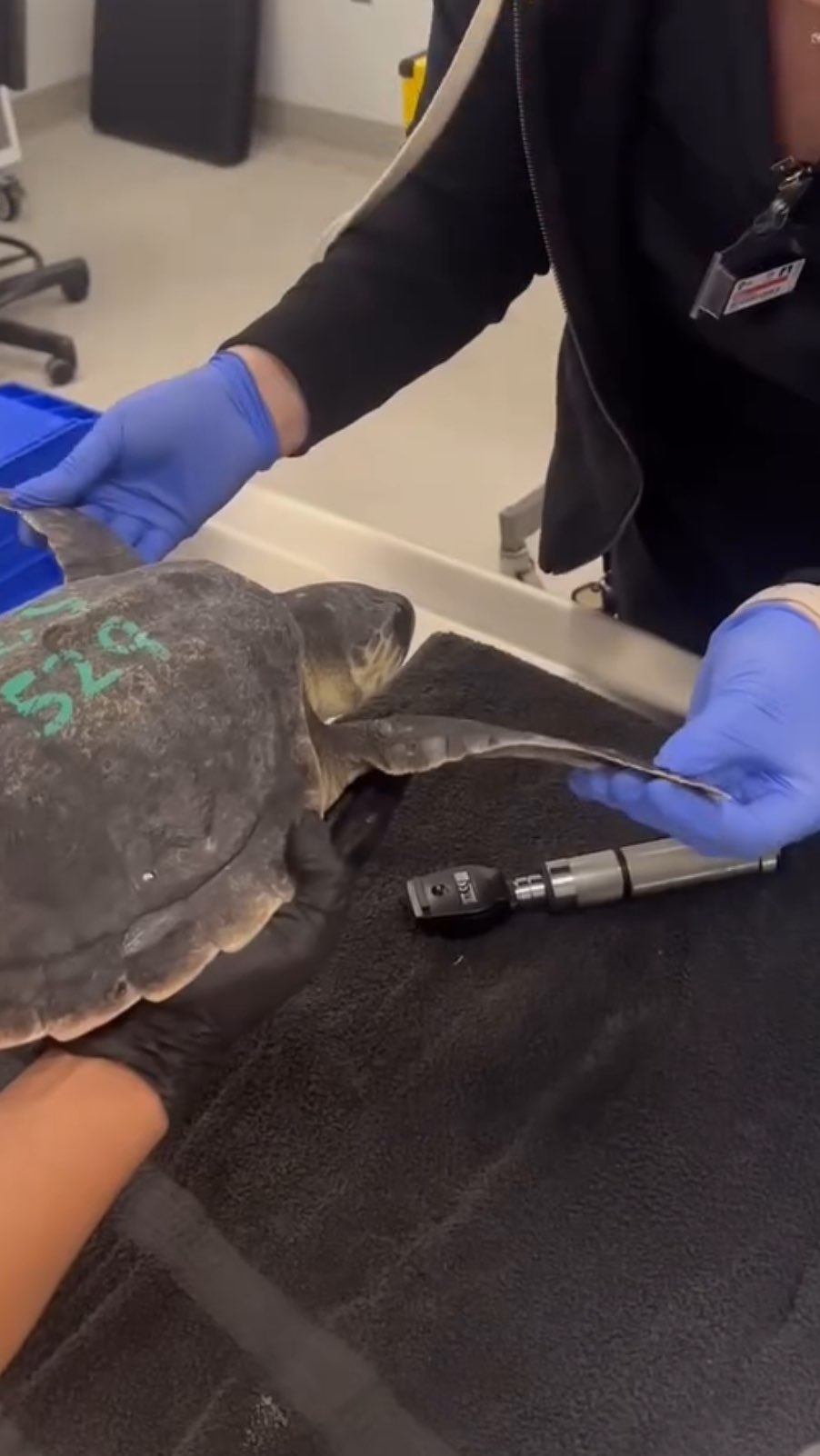- The journey and treatment of a juvenile Kemp’s Ridley turtle after it was stranded due to cold-stunning.
- The specific medical care and rehabilitation provided to support its recovery.
- The role and impact of wildlife rescue centers in conserving endangered species like the Kemp’s Ridley turtle.
- The importance of community support and donations in facilitating wildlife rescue and rehabilitation efforts.
- Innovative conservation partnerships and fundraising campaigns to support wildlife protection.
In December, a juvenile Kemp’s Ridley turtle, an endangered species, was transferred from the New England Aquarium to the Port Corpus Christi Center for Wildlife Rescue. This move followed the turtle’s stranding in Cape Cod, a consequence of cold-stunning, which is a life-threatening condition caused by a sudden drop in water temperature. Cold-stunning leads to lethargy and eventual stranding on beaches as turtles become unable to swim or feed. The case of this young turtle underscores the critical need for immediate intervention and specialized care, essential to counteract the dire effects of such natural phenomena.
Upon its arrival at the Port Corpus Christi facility, the turtle was diagnosed with pneumonia, a common complication in cold-stunned turtles due to prolonged exposure to cold temperatures. Treating pneumonia in sea turtles requires an interdisciplinary approach. This encompasses administering antibiotics and antifungal medications, providing nutritional support, and conducting frequent medical evaluations. This juvenile has been receiving advanced care, including CT scans, to assess lung recovery and monitor overall health. Continuous monitoring through imaging techniques like CT scans is vital for understanding the healing progress and adjusting treatments as necessary.
Since its transfer, the turtle has been showing encouraging signs of recovery. Increased activity levels, weight gain, and a hearty appetite are promising indicators of its improving health. The goal of wildlife rescue centers such as Port Corpus Christi is to rehabilitate and eventually release these animals back into their natural habitats. Maintaining a controlled environment simulating natural conditions allows turtles to regain their strength over time. The dedicated efforts of the medical and veterinary teams are crucial in ensuring that each turtle reaches a state where it can survive independently in the wild.
Kemp’s Ridley turtles are among the most endangered of sea turtles, with significant conservation efforts worldwide focused on protecting them from extinction. Wildlife rescue centers play a pivotal role by providing care and rehabilitation, but they cannot function effectively without support from the public and conservation partners. Community involvement, through volunteer work and donations, is integral to sustaining these establishments. It is crucial to highlight that rescue operations often depend on the financial assistance of wildlife advocates and environmental organizations.
This year, the Port Corpus Christi Center for Wildlife Rescue has embarked on a fundraising initiative supported by Tito’s Vodka, a company known for its environmental advocacy efforts. This partnership enables donations to be matched up to $5,000, amplifying the contributions of individual donors. Fundraising campaigns are indispensable tools in raising awareness about endangered species and securing necessary resources for ongoing rescue operations. They foster a collaborative atmosphere, encouraging communities to partake in conservation efforts actively.
Beyond direct donations, awareness campaigns are vital. Educating the public about the threats faced by species like the Kemp’s Ridley turtle can drive broader support for environmental policies and comprehensive conservation programs. Initiatives like the donation-matching program not only raise funds but also enhance public engagement, making it easier for individuals to connect with and support vital conservation causes.
In summary, the successful rehabilitation of this juvenile Kemp’s Ridley turtle illustrates the broader implications of wildlife rescue efforts. From the immediate medical responses to long-term conservation strategies, these programs encapsulate the spirit of environmental stewardship. Through community support and strategic partnerships, it becomes possible to create lasting impacts, not only for individual turtles but for entire species at risk of extinction. As advocates of wildlife protection continue to work toward a sustainable future, each contribution plays a significant role in overcoming the challenges faced by our planet’s diverse ecosystems.
*****
Source Description
This juvenile Kemp’s Ridley turtle was transferred from the New England Aquarium to the Port Corpus Christi Center for Wildlife Rescue in December for ongoing treatment and rehabilitation. After stranding in Cape Cod due to a cold-stunning event, it was diagnosed with pneumonia and has been receiving specialized care, including CT scans to monitor its recovery.
Since arriving, this resilient turtle has shown great progress as it’s more active, gaining weight, and eating well! With continued treatment, we’re hopeful for a full recovery and an eventual return to its natural habitat.
🐢 Stories like this are only possible because of support from wildlife advocates like you.
This April, help us raise funds for the Port Corpus Christi Center for Wildlife Rescue. Thanks to @titosvodka, your donation will be matched up to $5,000, doubling your impact!
🔗 Want to help make a difference? Comment “Link” and we’ll send you the link to the donation page directly!


